(1) Try this (magic :-)
Use 2N2222 + 2 x 10k resistor.
When input is low transistor is on and output is pulled low.
When input is high transistor is off and output is pulled high by collector resistor.
This is a less usual arrangement but allows non-inverted switching - in highh = out high etc.

Gumstix output has to provide LC293 input current and Vdd/10k input current as well. Should be no problem. Collector resistor MAY not be needed depending on LC293 behaviour.
Added:
MOSFETS:
If you use low Vgsth MOSFETS instead of transistors you can remove the input resistors. As above, the LC293 inputs MAY float high when open circuit - alowing the collector resistor to be eliminated - but even if they do it may not be something you should depend on.
(2) This uses no transistor but may need component cvalue adjustment to work acceptably.
2k7 LC293 input to 5V
2k2 LC293 input to ground
LC293 input is now at 2.25V.
This is a valid high input.
Connect a silicon diode from LC293 input to Gumstix output (arrow points to Gumstix, or Anode to LC293 cathode to Gumstix)
Connect a 100k from Gumstix output to ground (more conceptual than actual)
Set Gumstix output to 1.8V.
Diode Cathode and Gumstix output now "want to be" at 1 diode drop ~= 0.6V below 293 input = 2.25 - 0.6 = 1.65V. ie the diode means the 293 input is hardly if at all affected when Gumstix output ii 1.8V.
Now drive Gimstix out to 0V.
LC293 input is now at about 0.6V.
The data sheet does not make it certain but this will probably turn the LC293 input off.
Check voltages in above to ensure no voltages exceed IC ratings.
